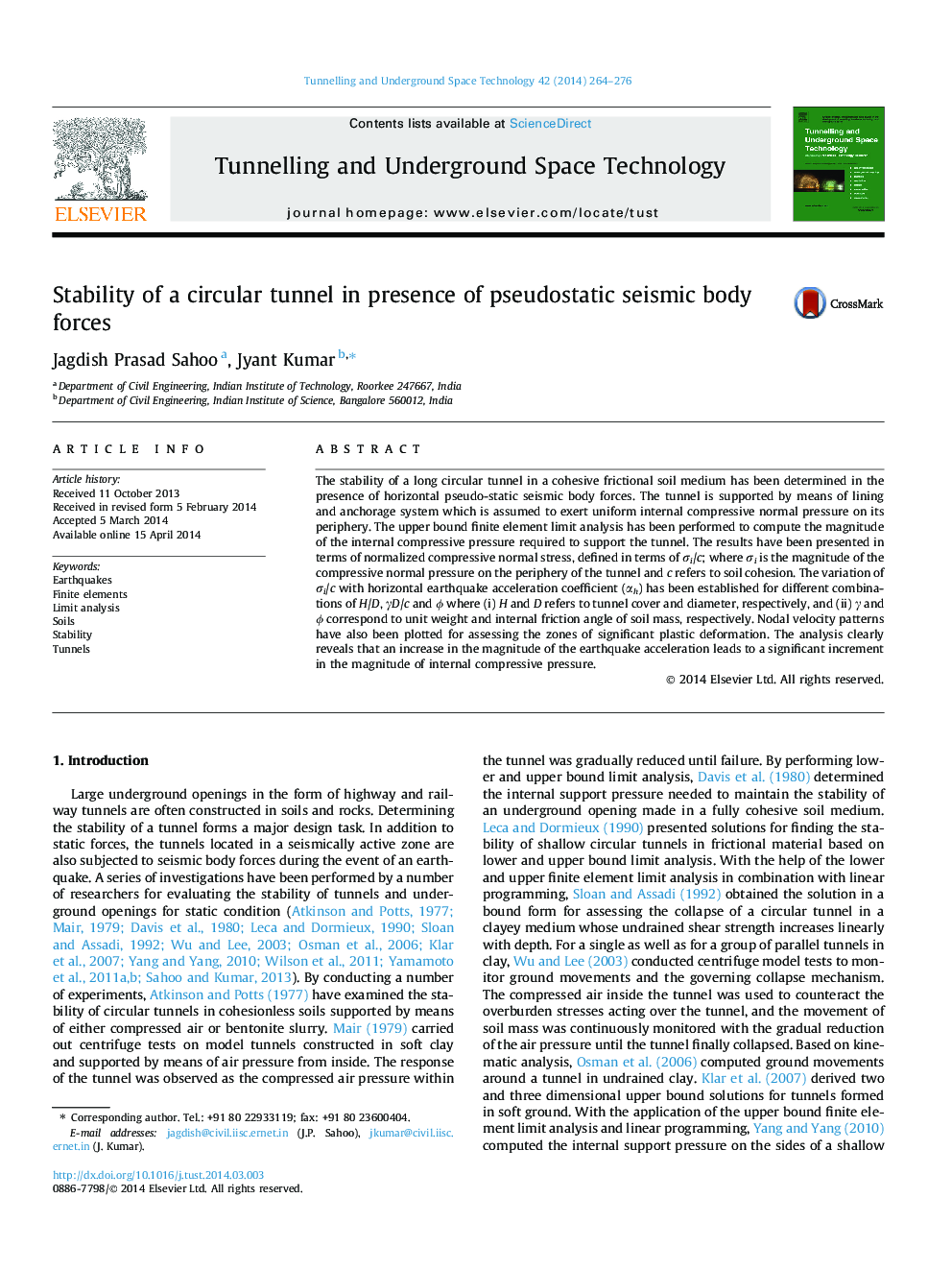| Article ID | Journal | Published Year | Pages | File Type |
|---|---|---|---|---|
| 312335 | Tunnelling and Underground Space Technology | 2014 | 13 Pages |
•Stability of a supported tunnel is examined.•Upper bound finite element limit analysis performed.•Seismic body forces have been considered.•Supporting pressures for design established.•Failure patterns examined in detail.
The stability of a long circular tunnel in a cohesive frictional soil medium has been determined in the presence of horizontal pseudo-static seismic body forces. The tunnel is supported by means of lining and anchorage system which is assumed to exert uniform internal compressive normal pressure on its periphery. The upper bound finite element limit analysis has been performed to compute the magnitude of the internal compressive pressure required to support the tunnel. The results have been presented in terms of normalized compressive normal stress, defined in terms of σi/c; where σi is the magnitude of the compressive normal pressure on the periphery of the tunnel and c refers to soil cohesion. The variation of σi/c with horizontal earthquake acceleration coefficient (αh) has been established for different combinations of H/D, γD/c and ϕ where (i) H and D refers to tunnel cover and diameter, respectively, and (ii) γ and ϕ correspond to unit weight and internal friction angle of soil mass, respectively. Nodal velocity patterns have also been plotted for assessing the zones of significant plastic deformation. The analysis clearly reveals that an increase in the magnitude of the earthquake acceleration leads to a significant increment in the magnitude of internal compressive pressure.
